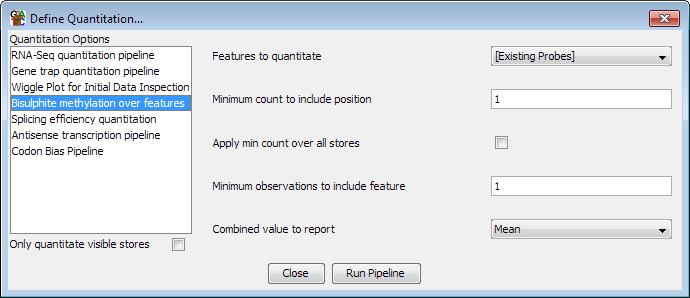The bisulphite feature methylation pipeline is a way to quantitate methylation over a whole feature but using only individual bases whose methylation state is well observed. It then calculates a pecentage methylation for each base and averages these to give an overall value for the feature.
The pipeline assumes that you have methlyation data which uses the standard convention of assigning methylated reads to the forward strand and unmethylated reads to the reverse strand. The reads should generally only be 1bp in length. This is the standard data you would get from importing the output of the bismark methylation extractor via the text import option.
Unlike most other quantitation methods it's possible that this pipeline won't assign a value to some probes in some datasets. In these cases the probe will be given the Not a Number (NaN) value, and will generally be ignored in subsequent calulations and plots.

The options you can set for this pipeline are: